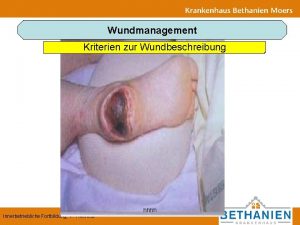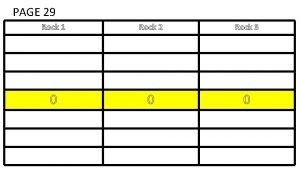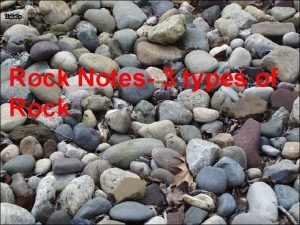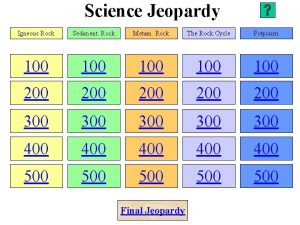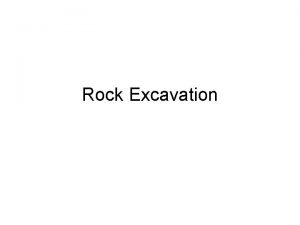Knighton Rock Description Method Sequence of description the








- Slides: 8

Knighton -Rock Description Method • Sequence of description –the quick and simple version • Colour • Sedimentary term • Grain Size • Bedding and variability • Fracture • Orientation [dips and joints or structures] • Example

Colour • Often in the Ludlow sequence this comes down to variants of neutral grey, or buffs [pale browns]. • However there are blues, greens, reddish and yellow greys. • Alterations and banding important to note • Worth noting colour of weathering and fresh faces. . Wet and dry • Maunsel Colour Chart may be helpful • Eg a pale grey weathering to buff on surface of shales, slight banding in fresh specimen alt. dk. grey 2 mm / pale grey 5 mm.

Sedimentary Terms • This relates to how the sediment is laid down, if the colour is even and the hand specimen shows no variation then its homogenous [bioturbated] • If in hand specimen it shows some form of banding, or the gross exposure shows alterations, then it becomes laminated or alternating beds. • Eg homogenous …. massive beds becoming laminated above in flags

Grain Size • Can be variable – but usually straightforward • Cobbles - conglomerates • Grit • Coarse to fine Sand • Siltstone [can you feel any grain] • Mudstone [cannot feel any grittyness] • Limestone [acid test] - usually as calcilutite [sludge!] • With a hand lense can you see any grains ? Any cementing matrix?

Bedding • This usually describes the nature of the horizontal contact between various beds, or just within the bed itself, usually showing up a cleavage. • Massive [no splitting, even if you hit it] • Flaggy [Flagstones] • Tilestones [not really used these days, but it is descriptive] • Shale [less than 1” • Paper Shales [very fine and often crumbly]

Variations and Inclusions • • • A wide variety of possibilities here: Describe the variation of bedding from bottom to top Shapes –such as ballstones or doggers [ oval balls] Nodules /Fossils etc Also such terms a ‘tough’ or ‘friable’, or uneven or other cleavage terms such as conchoidal [rounded] may be useful to refine the description. • Note Cleavage is a quarrymans term, if you hit it along the bedding plane and it is fissile, it will cleave [split] cleanly, the basis of rock dressing.

Orientation • The Strike Method = Left Hand Rule [Index Finger is Strike, thumb dip direction] • 000/10 East – 360/10 West • 090/10 South 270/10 North • Apparent Dip = Downdip direction / dip • 270/10 West • Same can be applied to main fractures on face , but these are termed • S 1 and S 2 [Structural fractures]

Example Medium grey laminated SILTSTONE flaggy to tilestone with some shale –evenly bedded. Exposure shows microlamination [alternations of fine pale buff and grey] especially in basal 1 metre – increasingly uneven bedding towards the top, with some alternating shales. Strike on Bedding = 280/05 NNE shown as strike S 1 090/85 S [The main face] S 2 350/80 E [The fracture into the face on the right]

